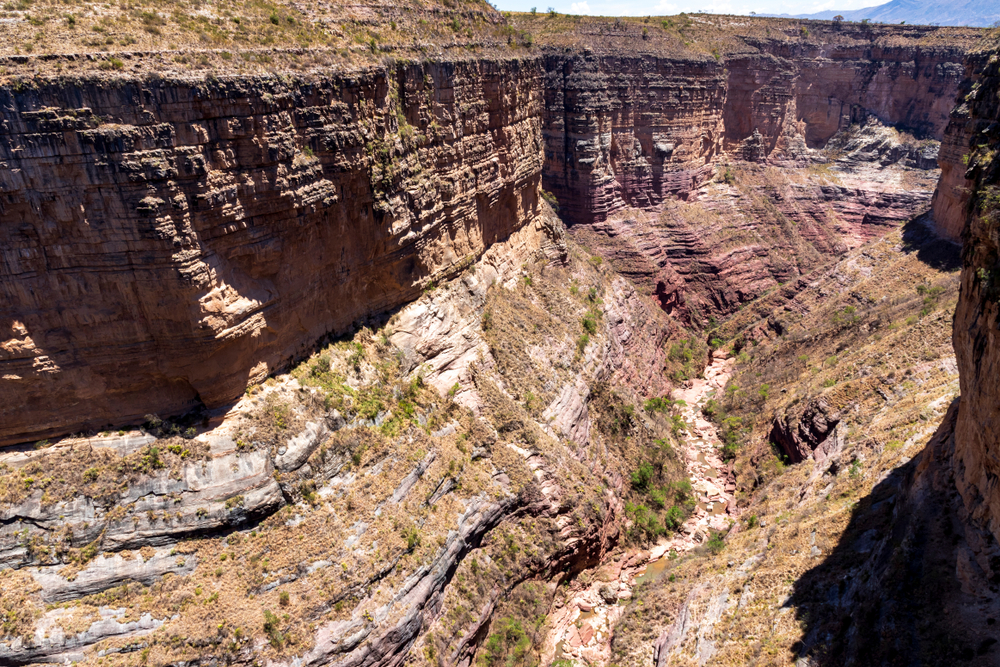Kaa-Iya del Gran Chaco Overview
Kaa-Iya del Gran Chaco National Park, known as Parque Nacional y Área Natural de Manejo Integrado Kaa-Iya del Gran Chaco in Spanish, is Bolivia’s largest national park and one of the most significant protected areas in South America.
Covering approximately 13,223 square miles (34,411 square kilometers), it is located in the southeastern part of Bolivia, spanning the departments of Santa Cruz, Chuquisaca, and Tarija.
This vast and remote park is part of the Gran Chaco, a unique dry forest ecosystem that extends into neighboring Paraguay, Argentina, and Brazil. Kaa-Iya del Gran Chaco is notable not only for its immense size but also for its conservation significance, as it serves as a crucial refuge for an array of species adapted to this harsh and arid environment.
The park’s terrain is predominantly flat to gently undulating, with an extensive network of dry forests, thorny scrublands, and savannas that characterize the Gran Chaco region. The landscape features sandy soils, dry riverbeds, and isolated waterholes that provide essential hydration to the region’s wildlife. Unlike the Andean regions of Bolivia, which are defined by towering mountains, Kaa-Iya del Gran Chaco is distinguished by its lowland wilderness and rugged vegetation.
During the dry season, the region appears parched, with trees shedding leaves to conserve water, while the rainy season transforms the park with bursts of greenery and replenished wetlands that attract various animals. The flora is adapted to extreme conditions, with species such as quebracho, palo santo, and carob trees dominating the landscape alongside cacti and spiny shrubs that help define the Chaco’s semi-arid nature.
Kaa-Iya del Gran Chaco is home to an impressive array of wildlife, many of which are elusive due to the dense vegetation and vast expanses of uninhabited terrain. It is one of the most important habitats for the jaguar, offering some of the highest densities of this apex predator in Bolivia.
Other large mammals found in the park include pumas, ocelots, tapirs, and the rare Chacoan peccary, an endemic species once believed to be extinct. The park also supports giant anteaters, armadillos, and capybaras, along with numerous species of monkeys and deer.
The avian diversity is equally remarkable, with more than 300 bird species recorded, including the red-legged seriema, harpy eagle, and various macaws and parrots that thrive in the park’s woodlands. The wetlands and water sources attract migratory birds, making Kaa-Iya an important sanctuary for both resident and seasonal species.
One of the most compelling features of the park is its isolation, making it a destination for dedicated wildlife enthusiasts and conservationists. Visitors can engage with the park through guided expeditions that focus on tracking jaguars and other elusive species.
Due to its remoteness, access is limited, and most tourism is organized through specialized eco-tours or research-based programs. There are no extensive visitor facilities, reinforcing the park’s wild and untamed character. Hiking and wildlife observation are primary activities, with some visitors utilizing camera traps to document nocturnal species. The park also holds cultural significance as it is co-managed by the indigenous Izoceño-Guaraní people, who have lived in the region for centuries and contribute to its protection.
Conservation efforts within Kaa-Iya del Gran Chaco have been largely successful, particularly in safeguarding jaguar populations and other key species. The park’s management is a collaboration between the Bolivian government, conservation organizations, and local indigenous communities, ensuring sustainable protection of its resources.
However, threats such as deforestation, agricultural expansion, and illegal hunting pose ongoing challenges. Despite these risks, Kaa-Iya remains one of the last strongholds for the unique Chaco ecosystem and continues to play a vital role in South American biodiversity conservation.











































































